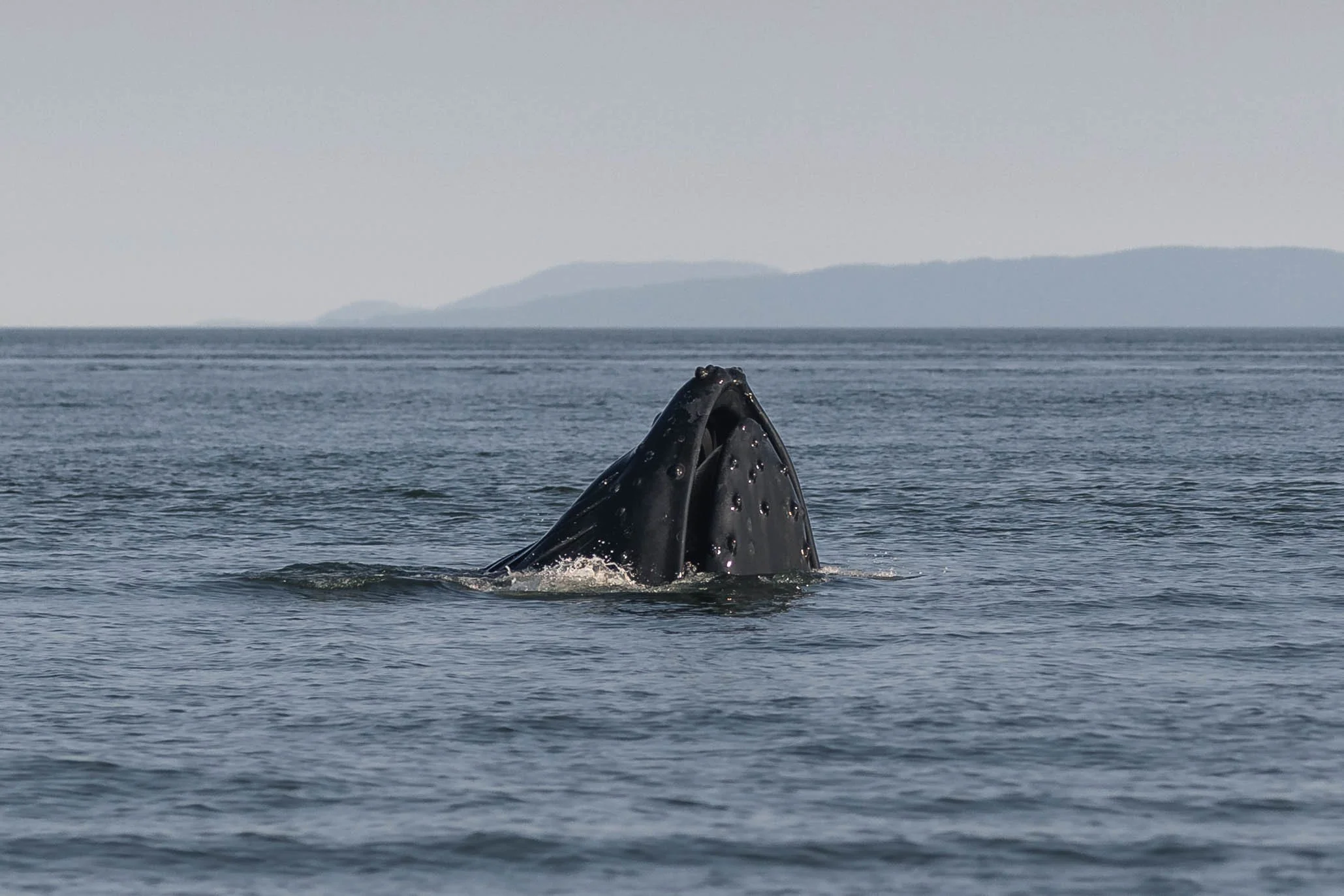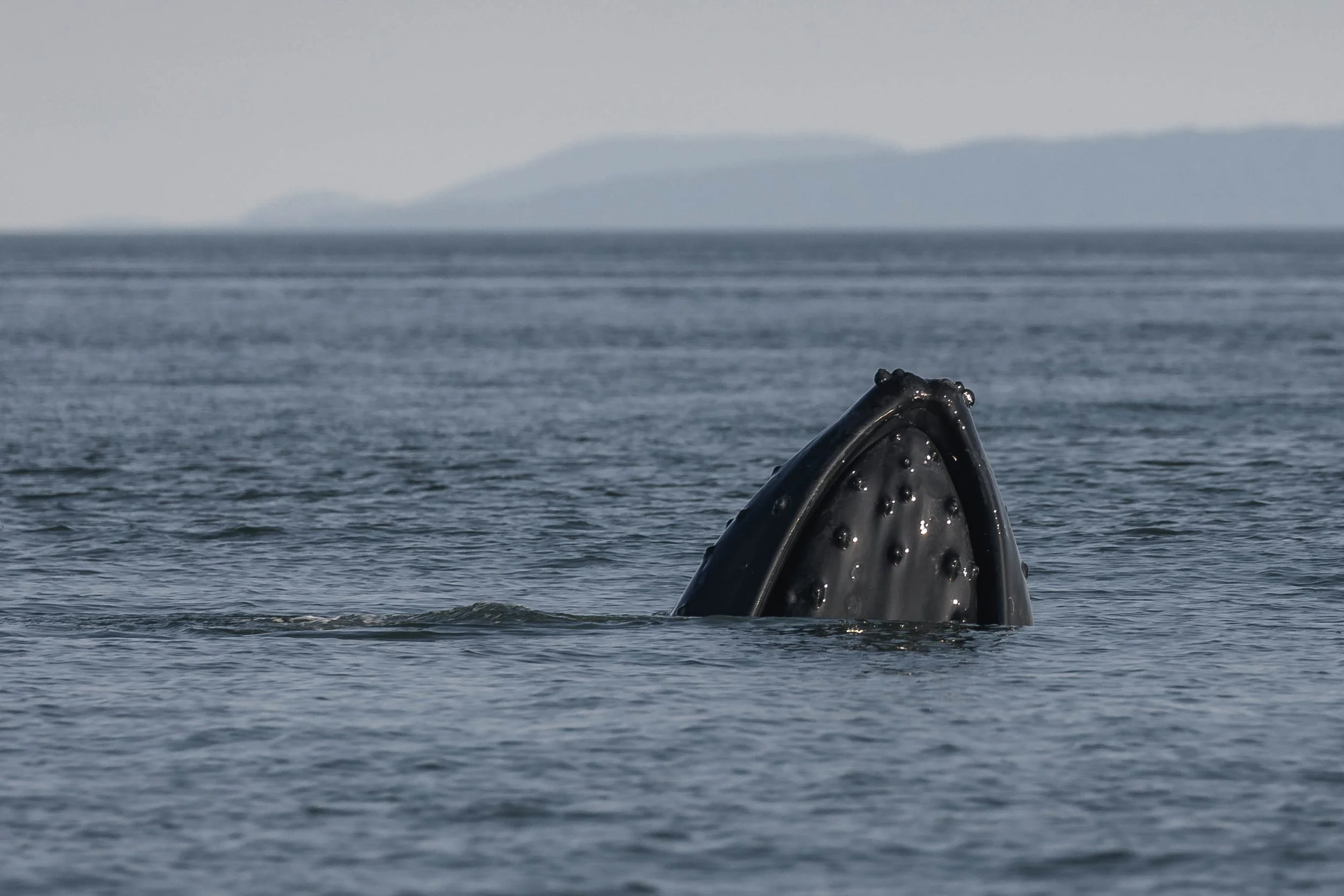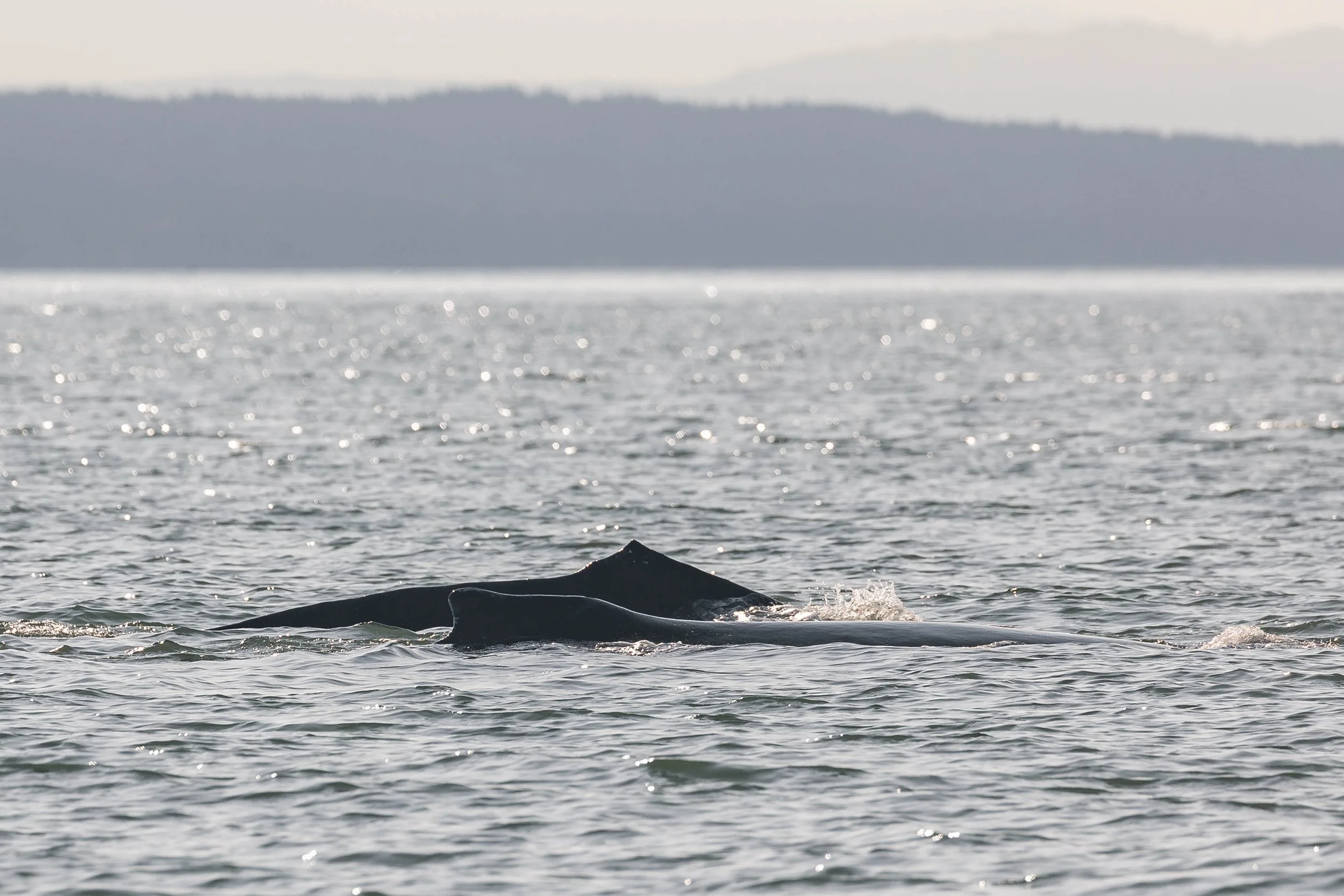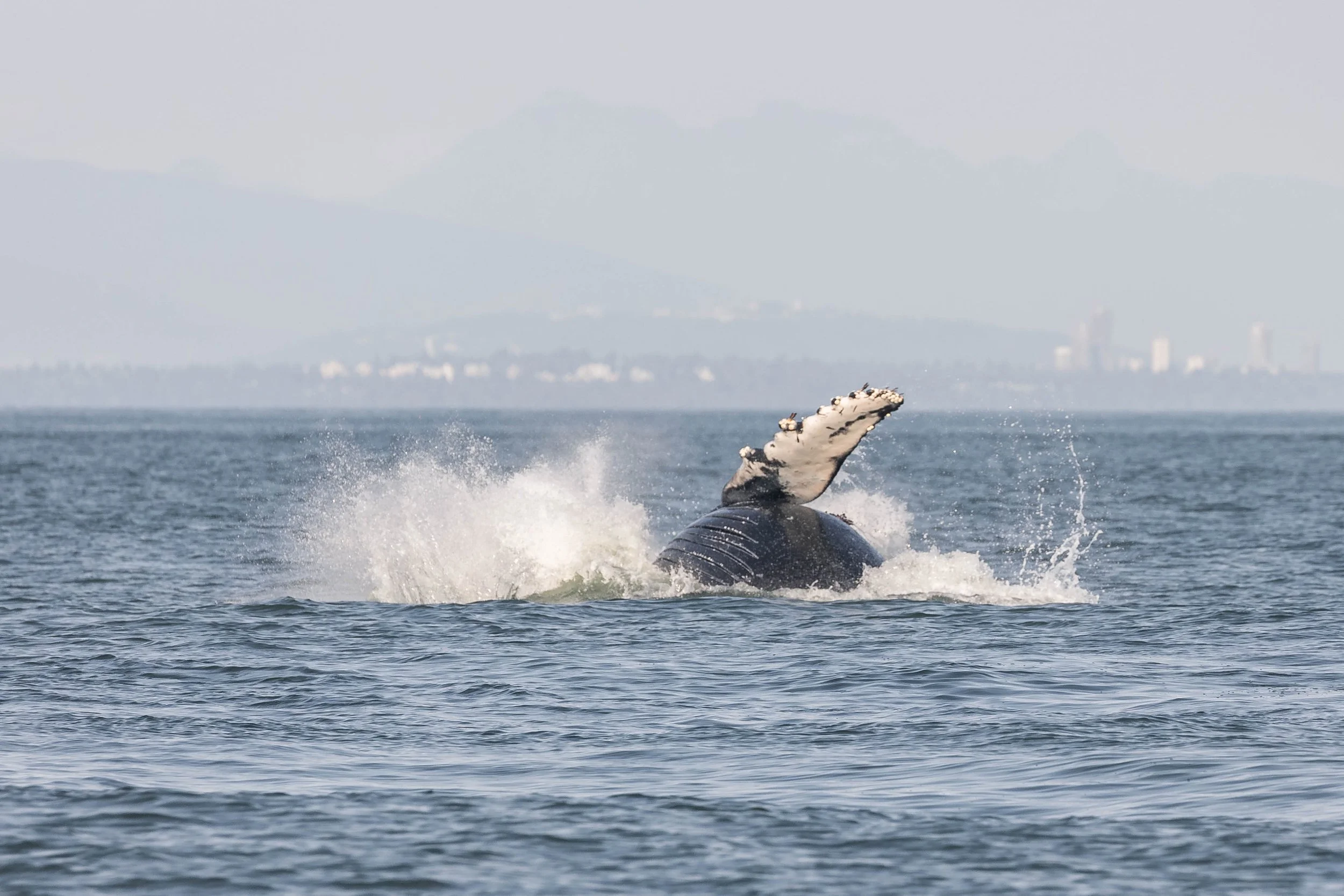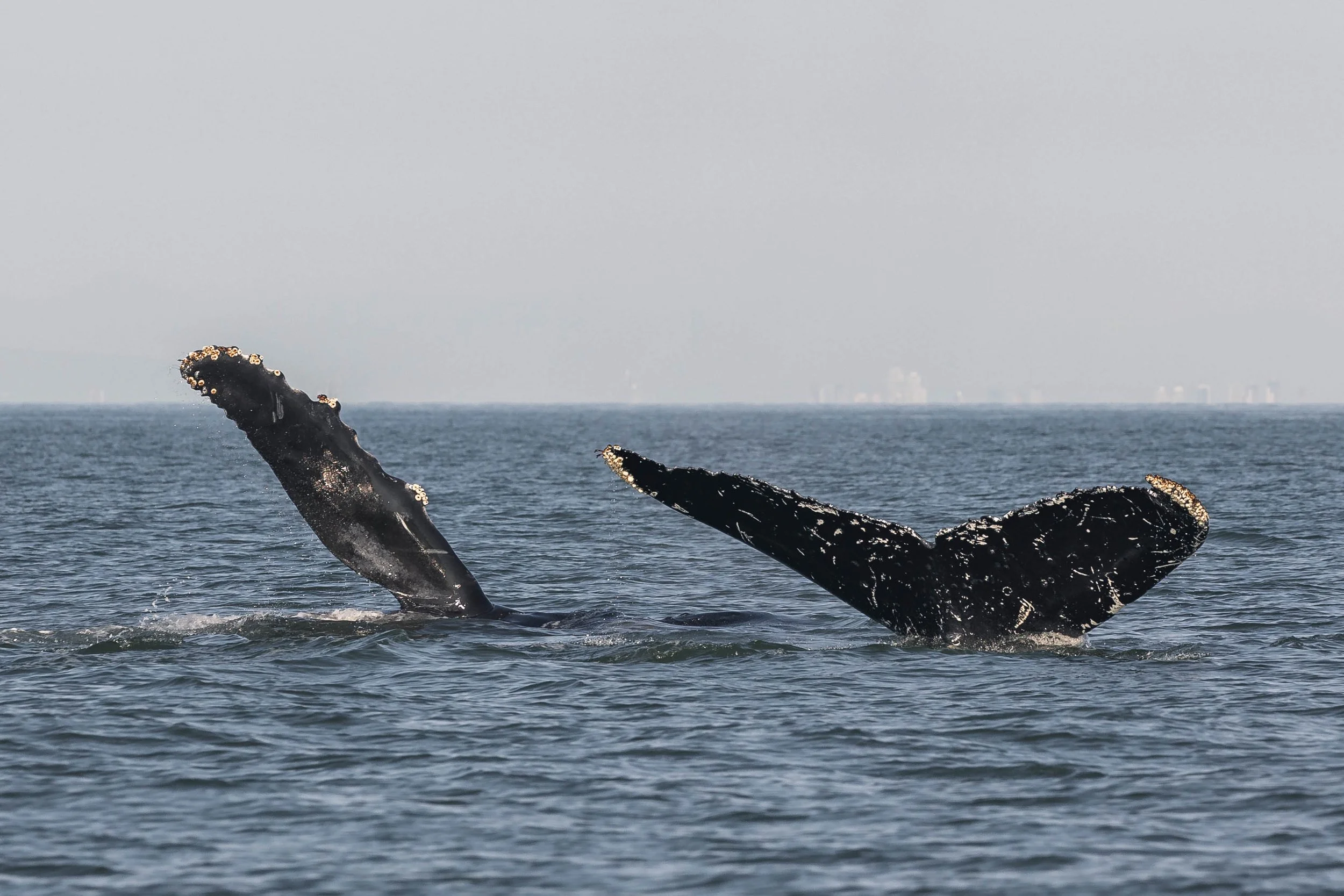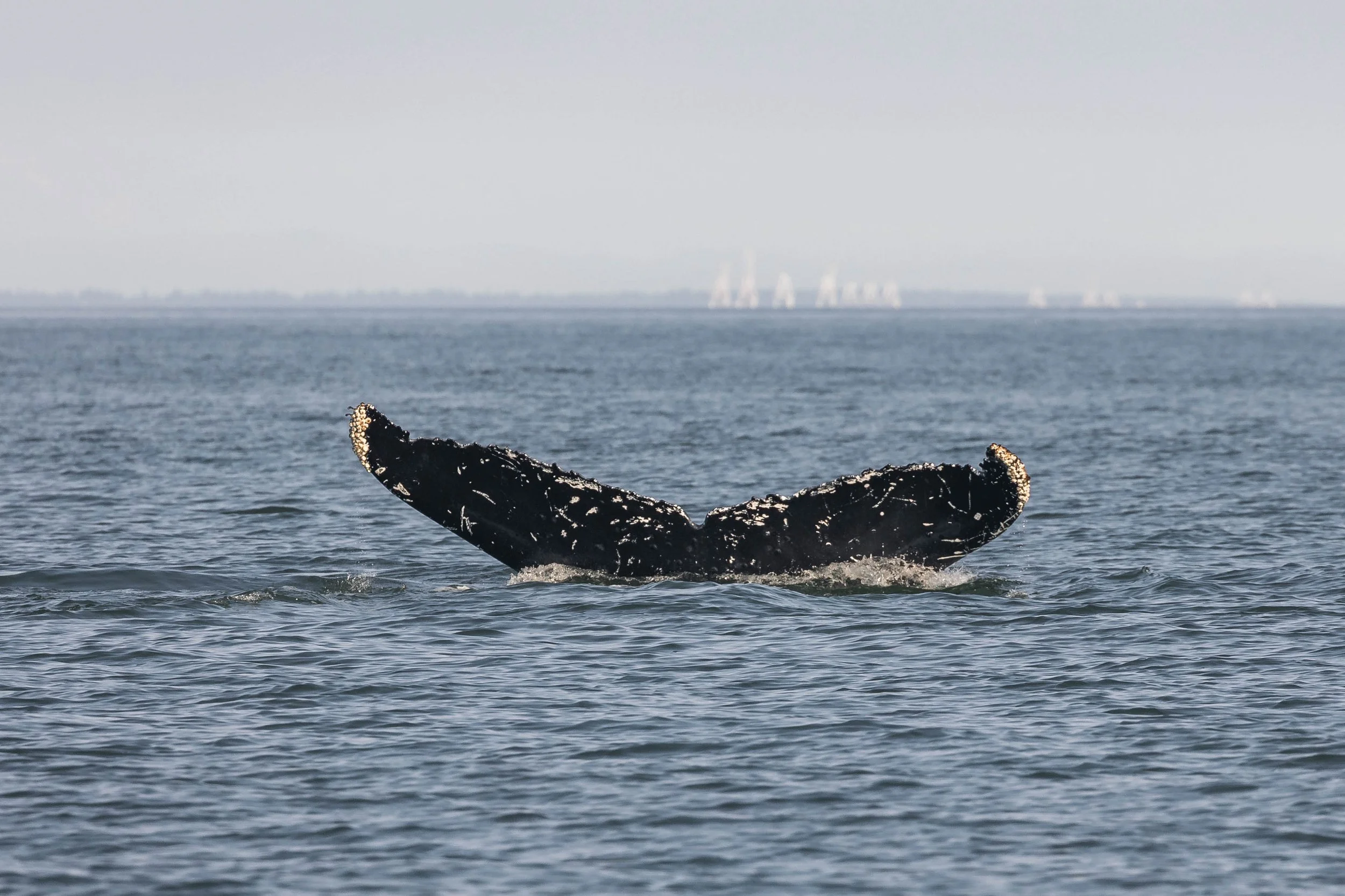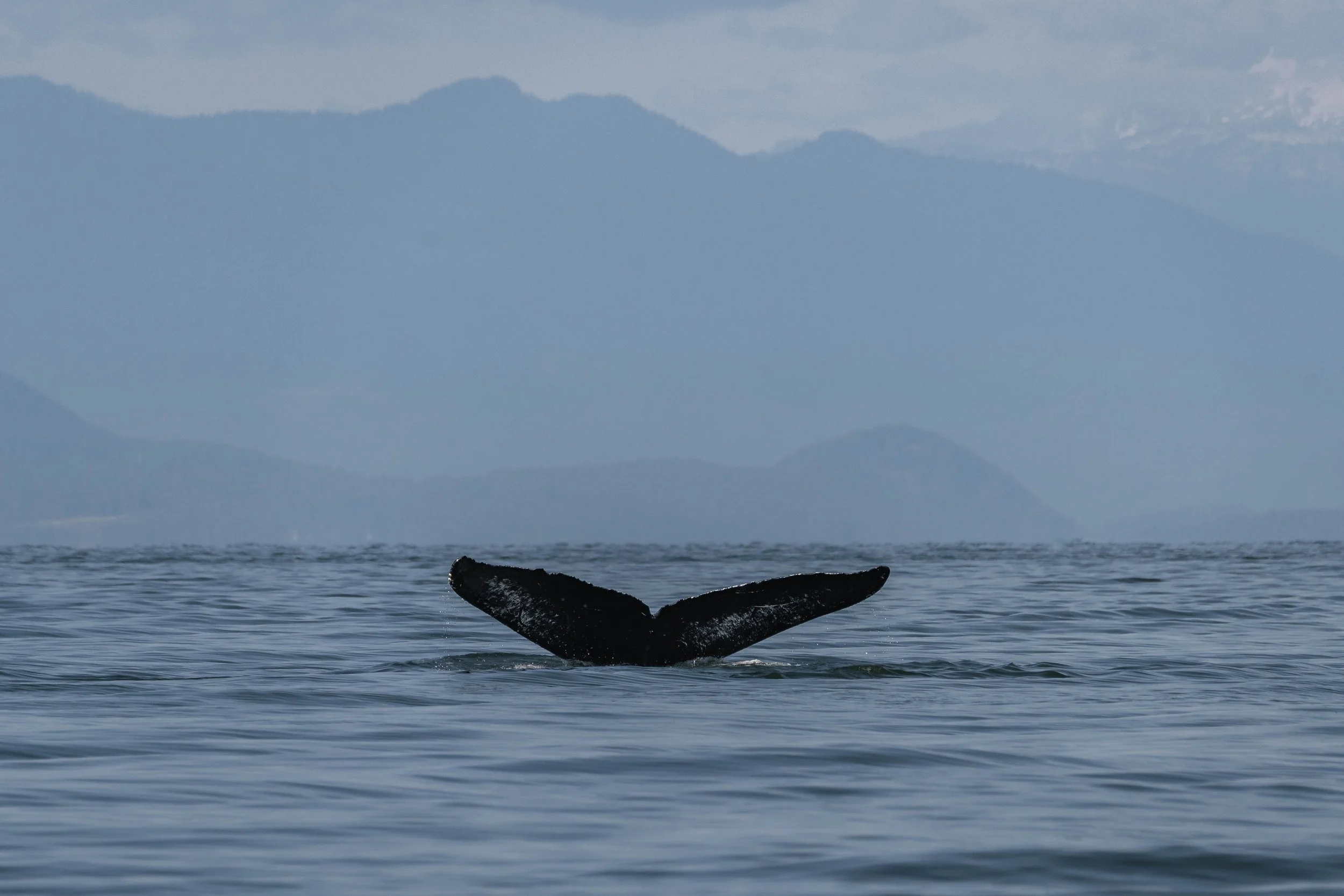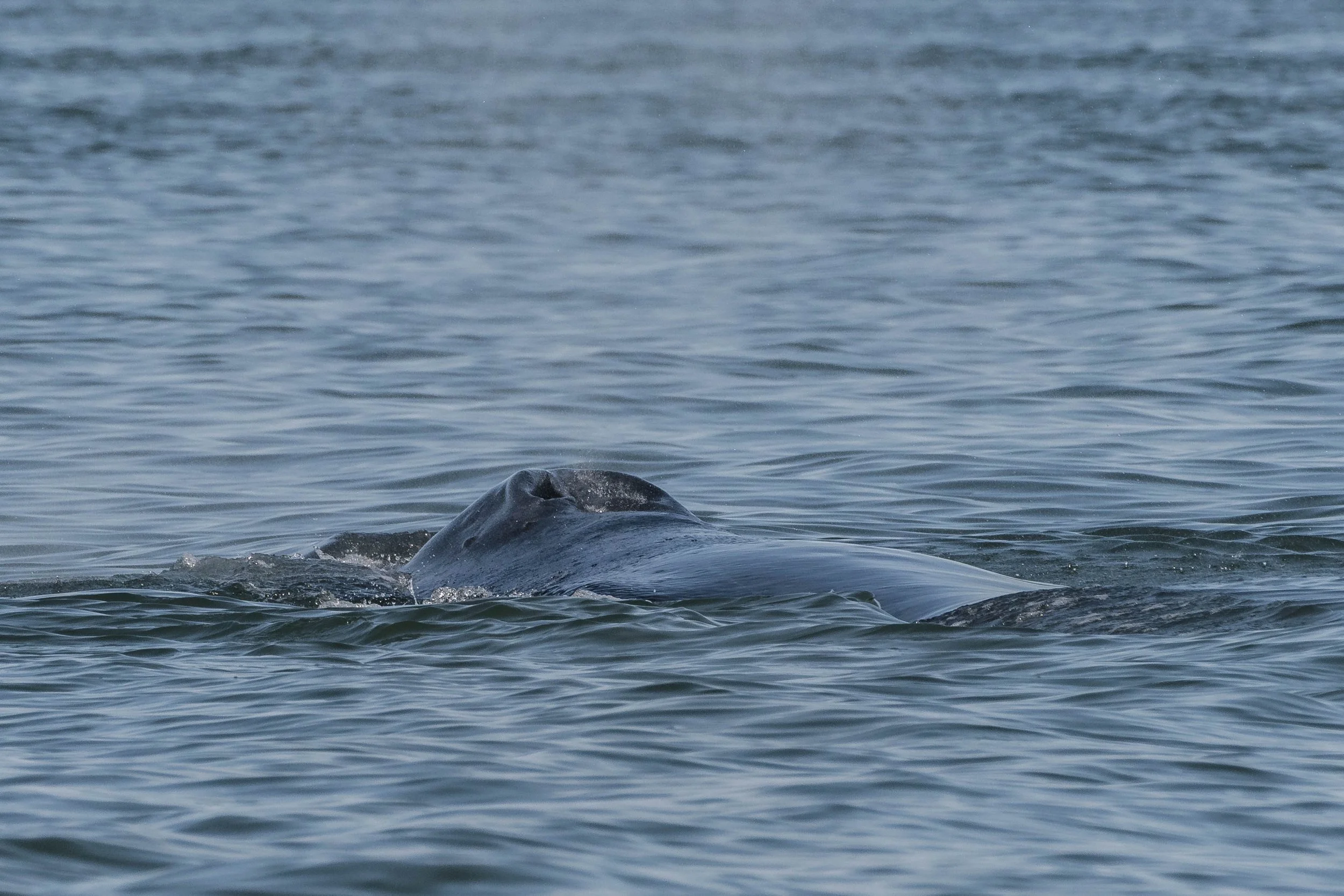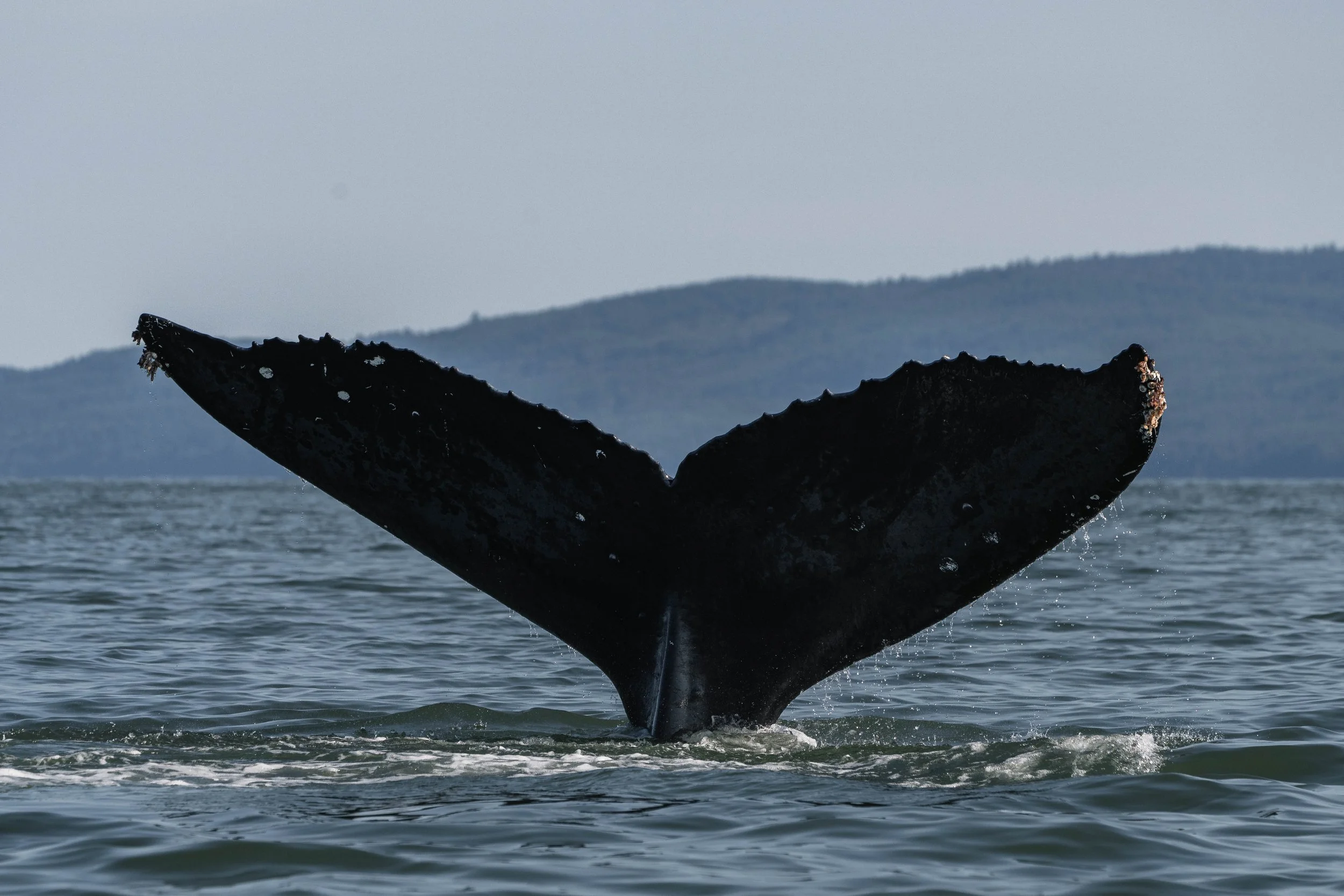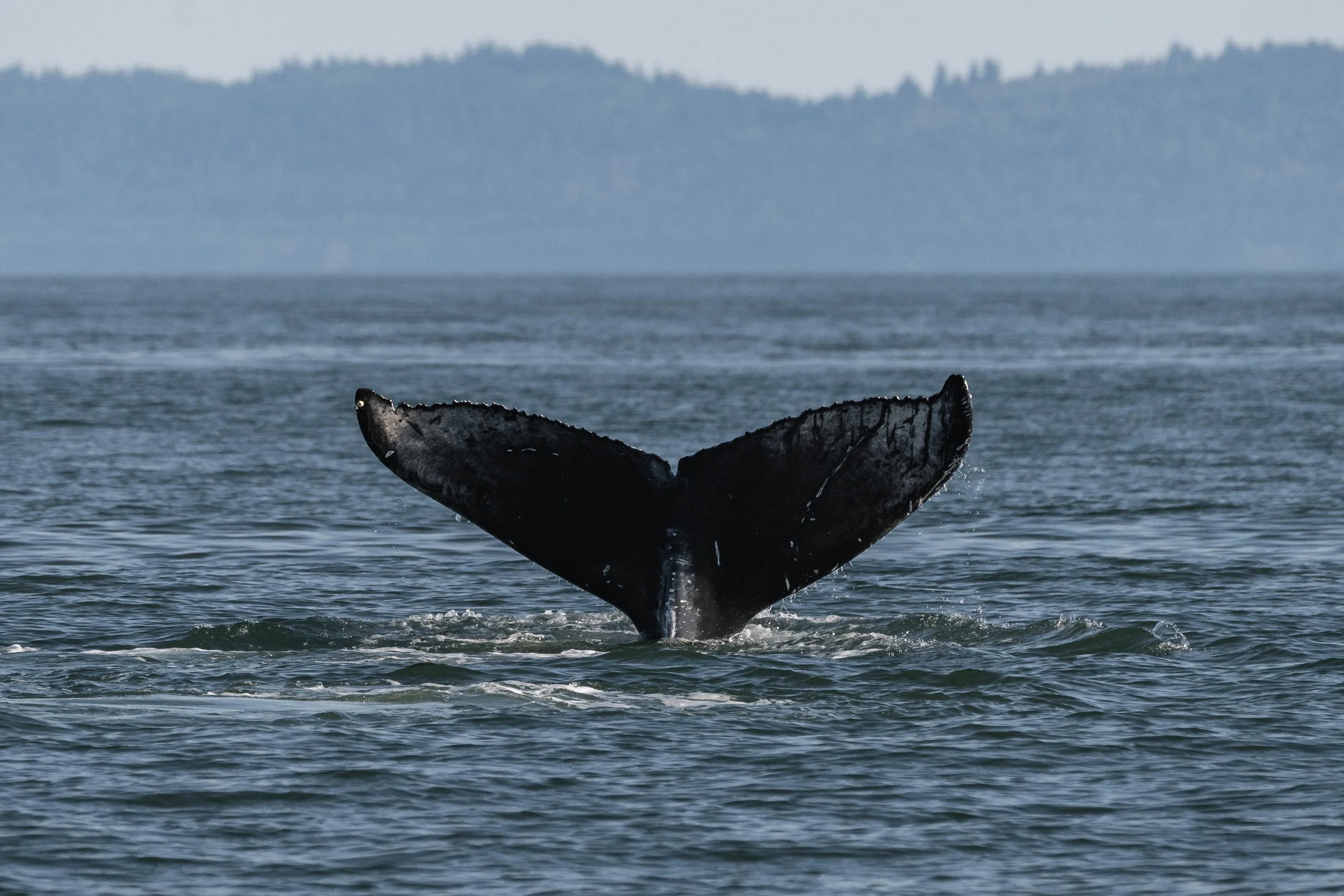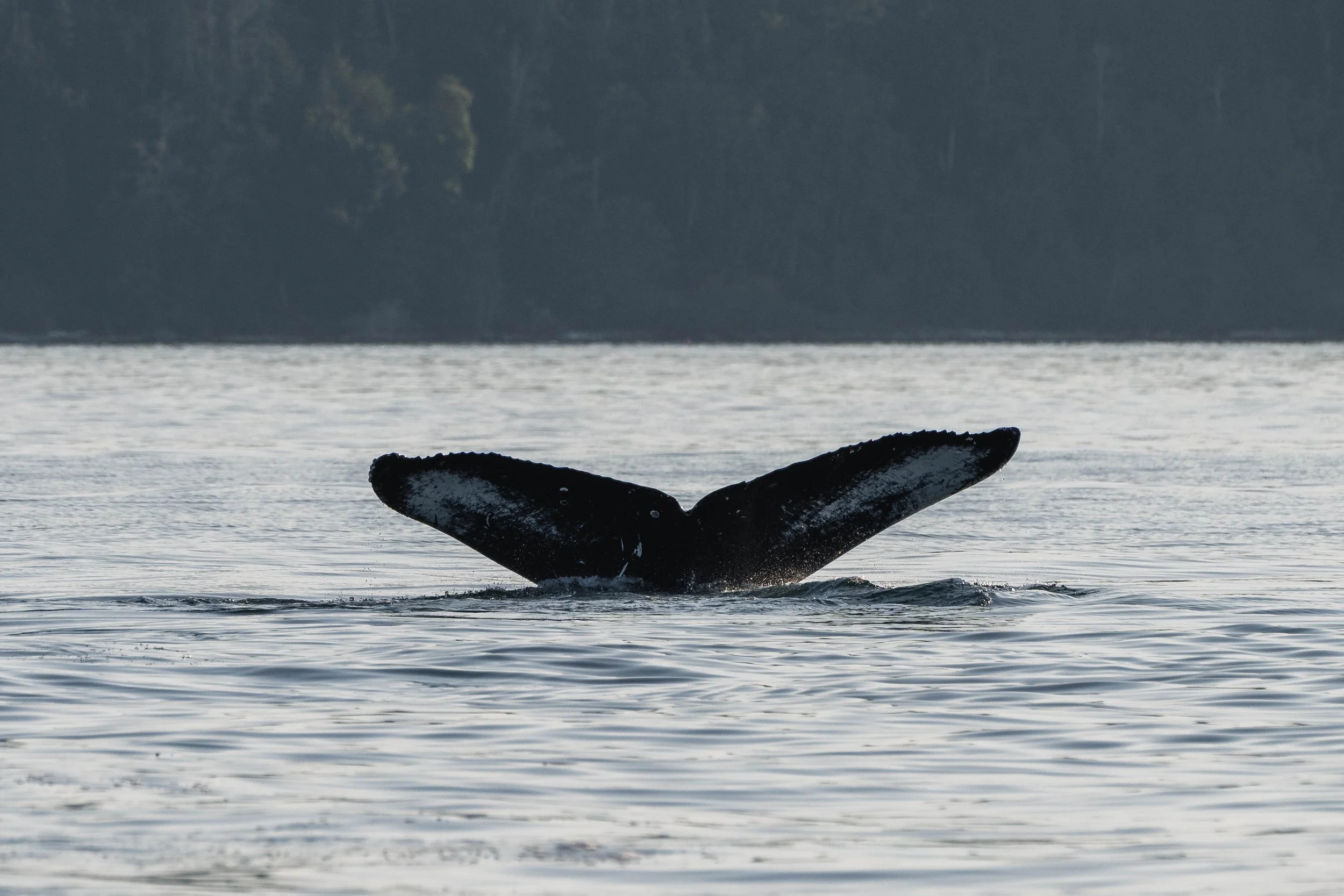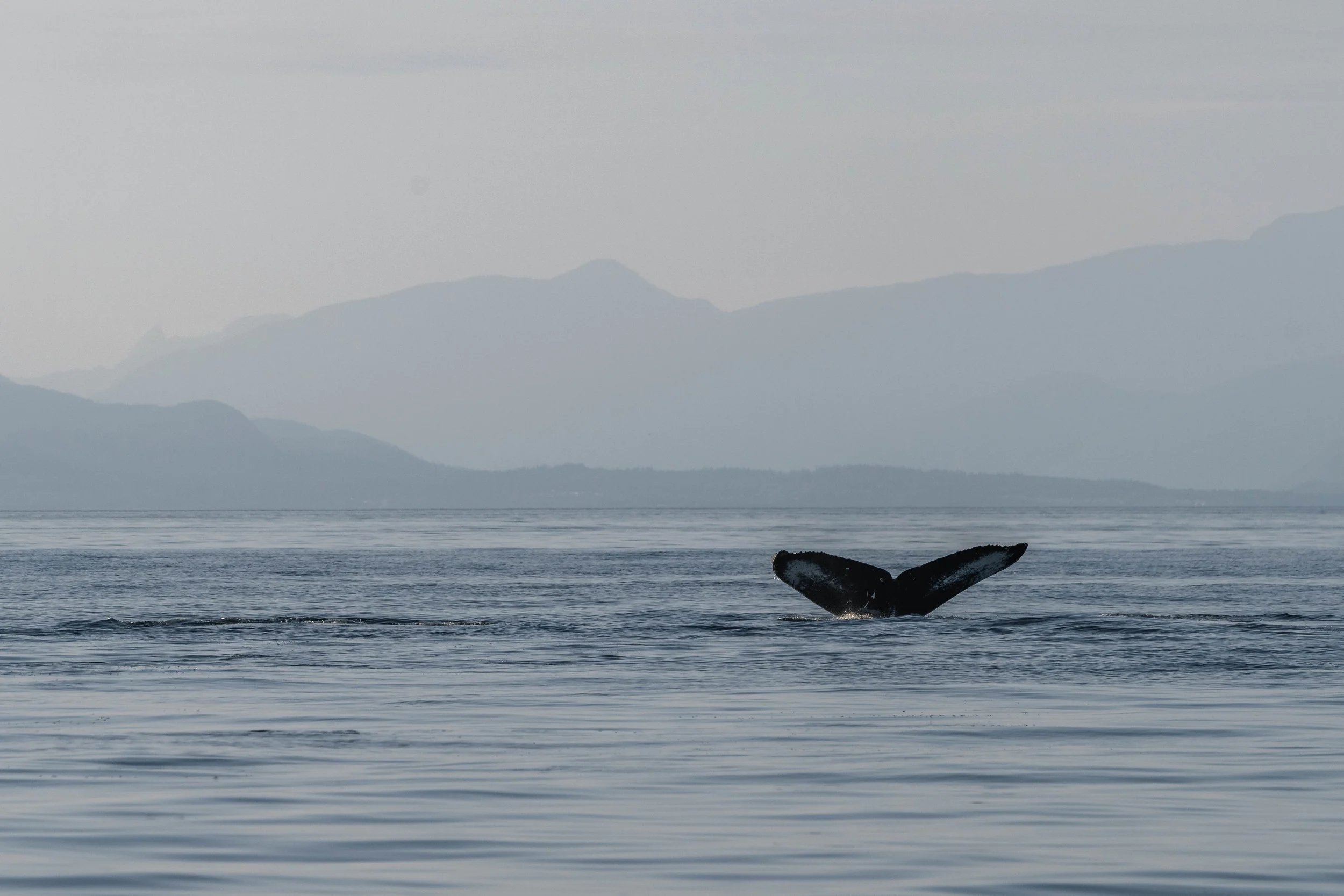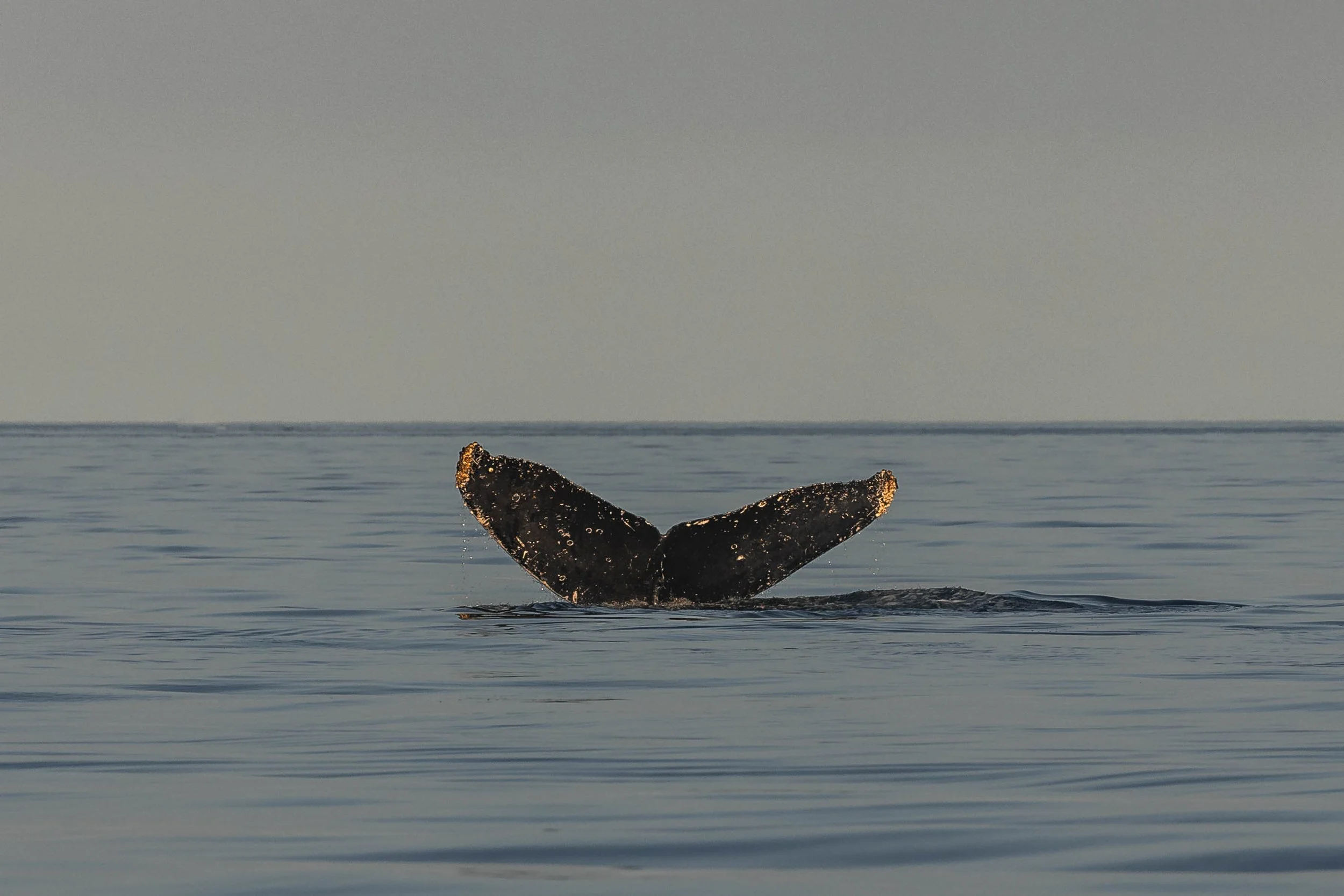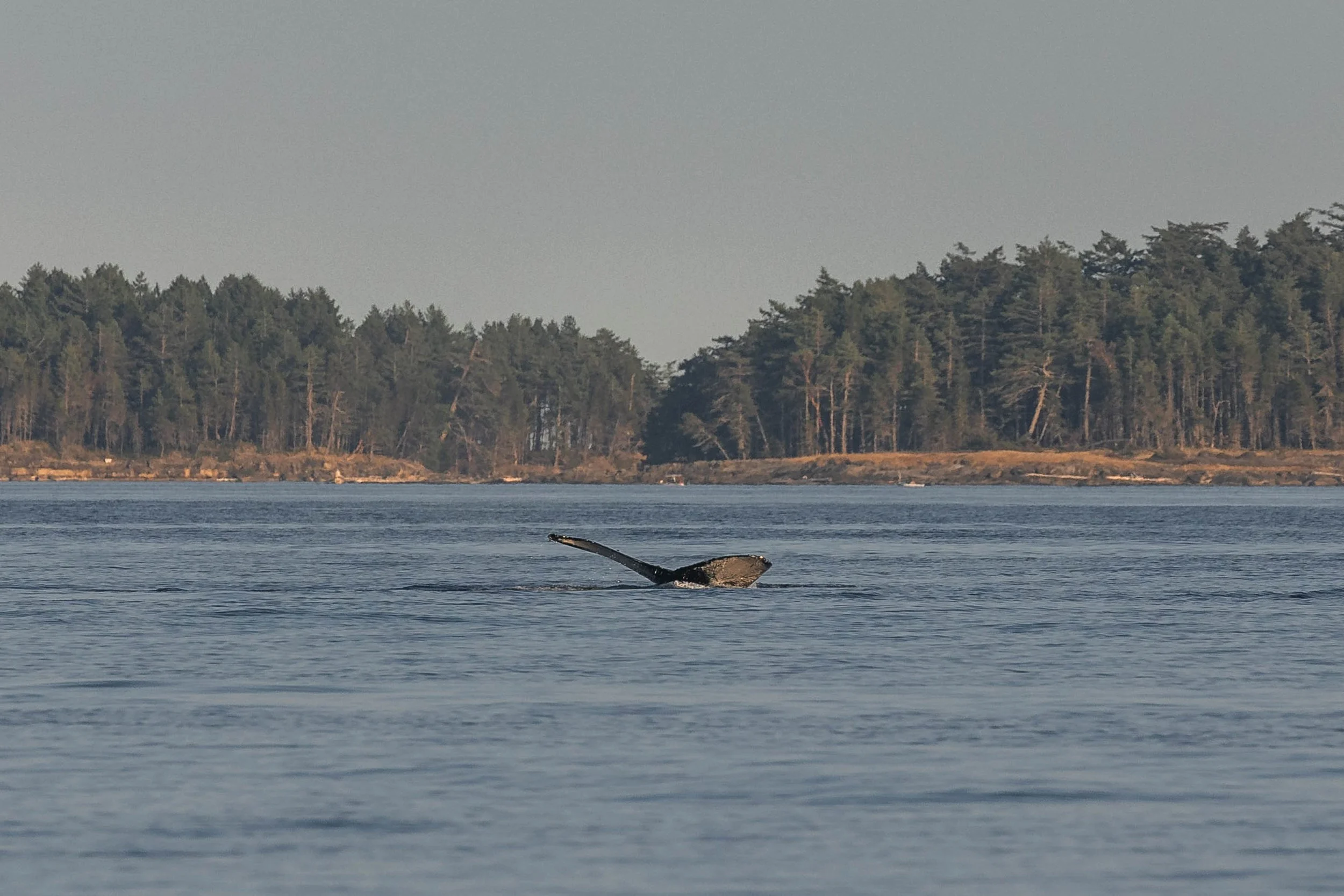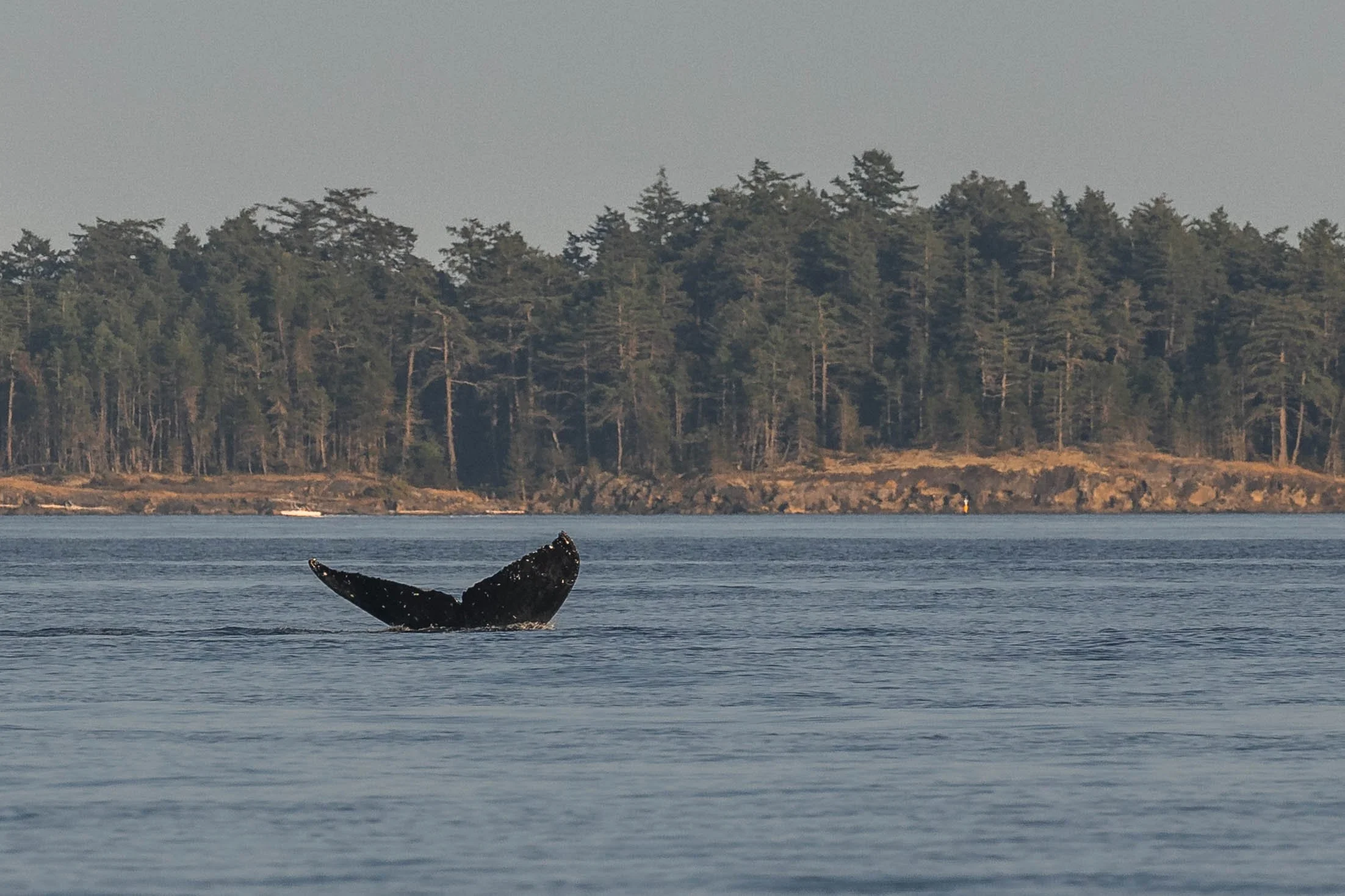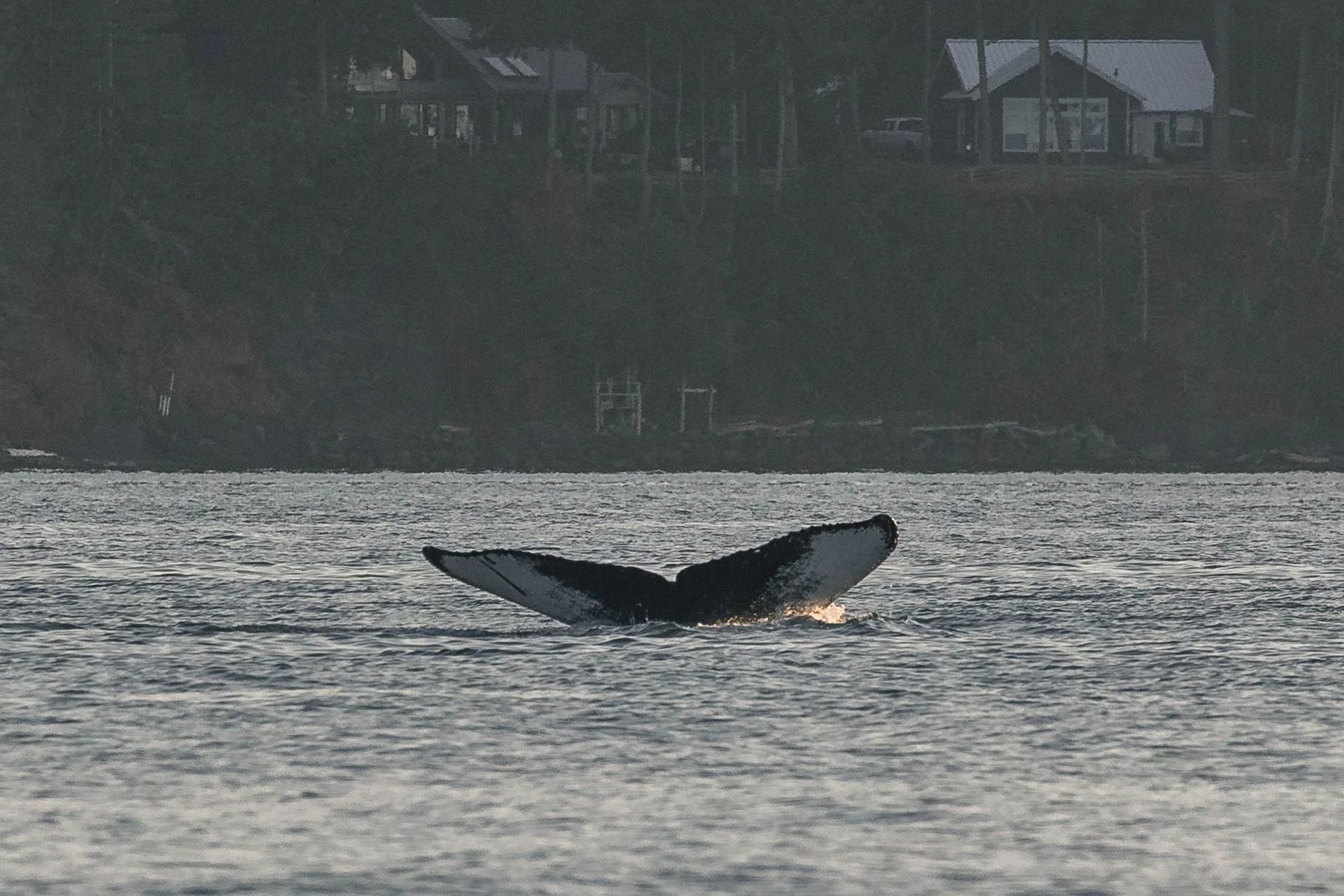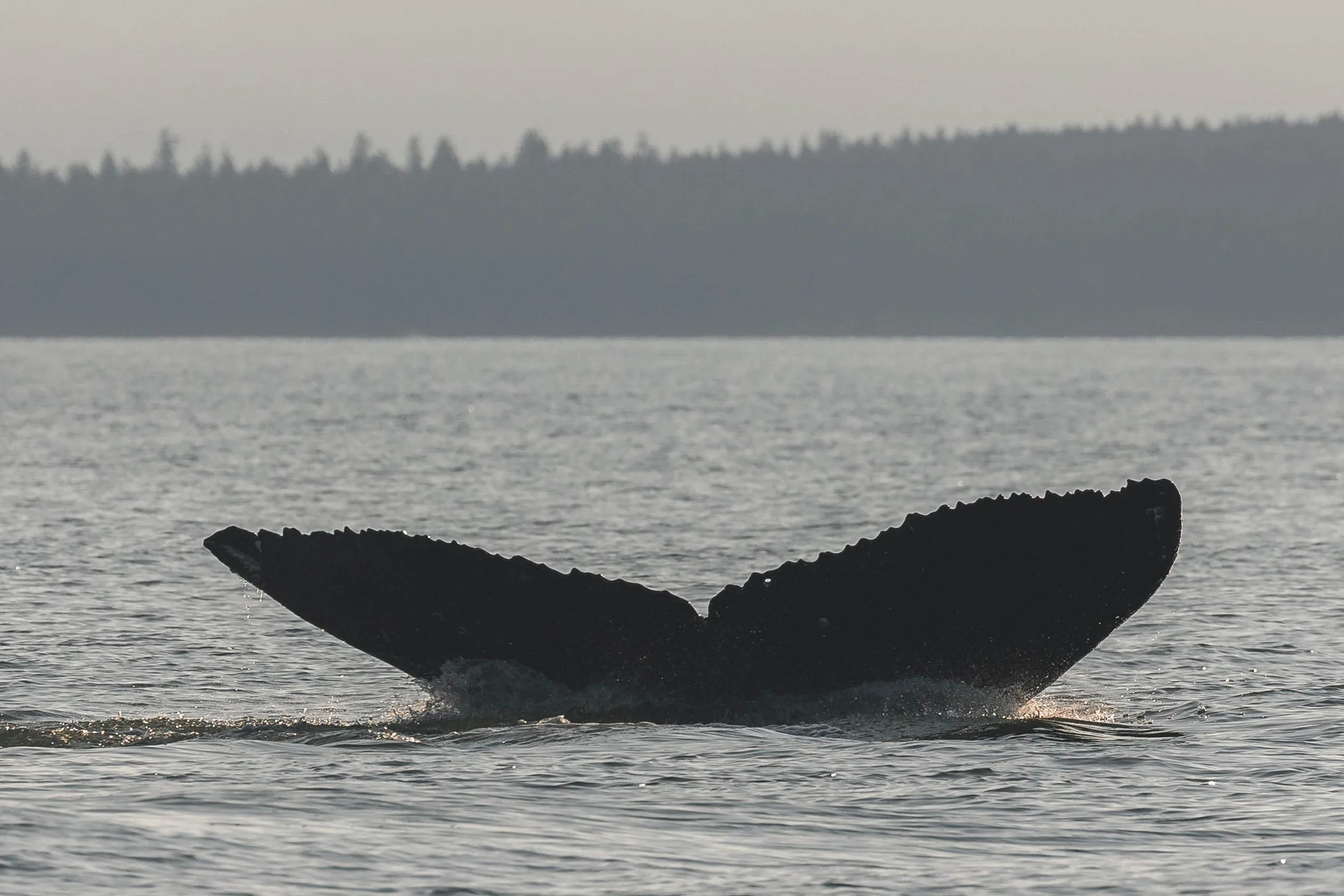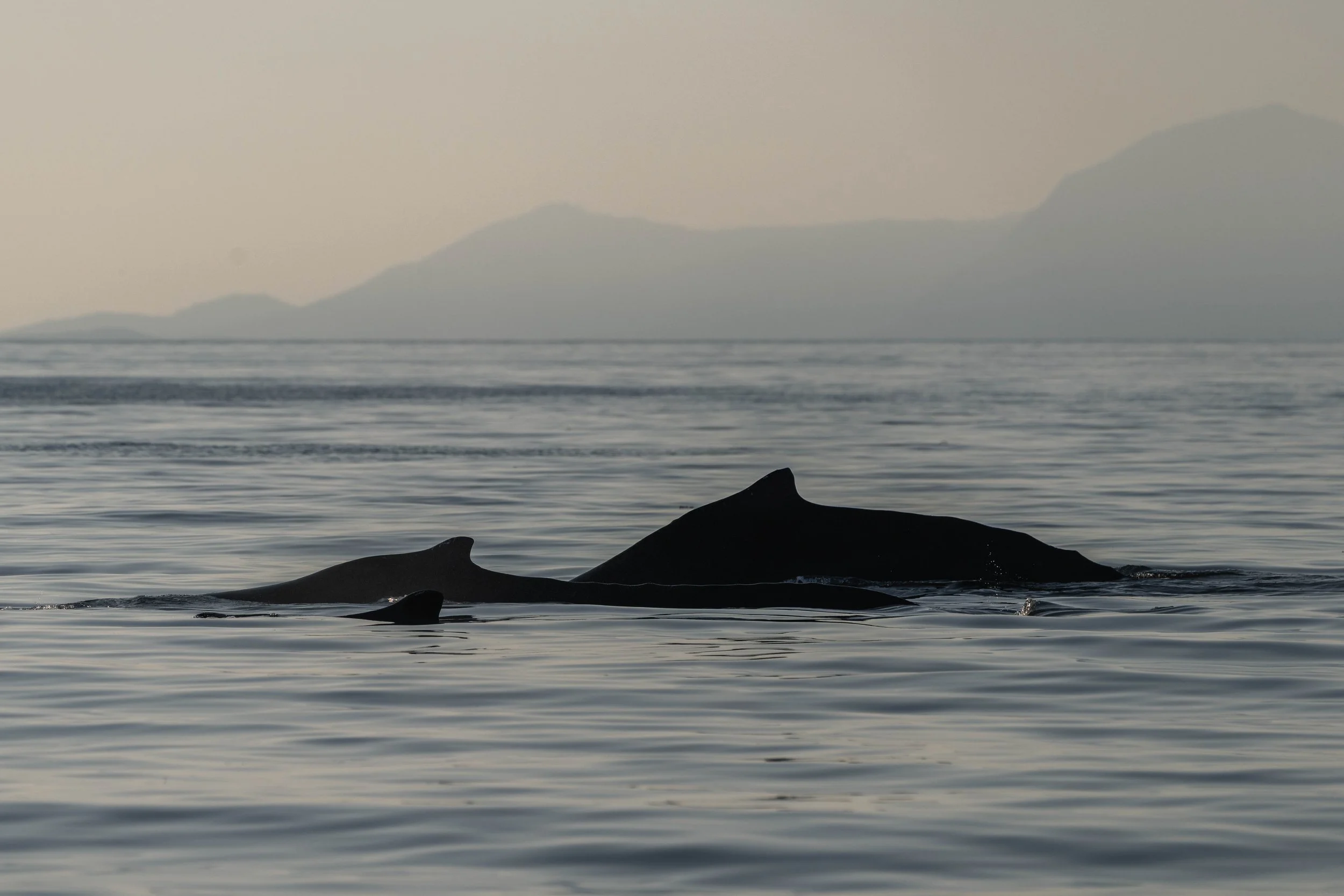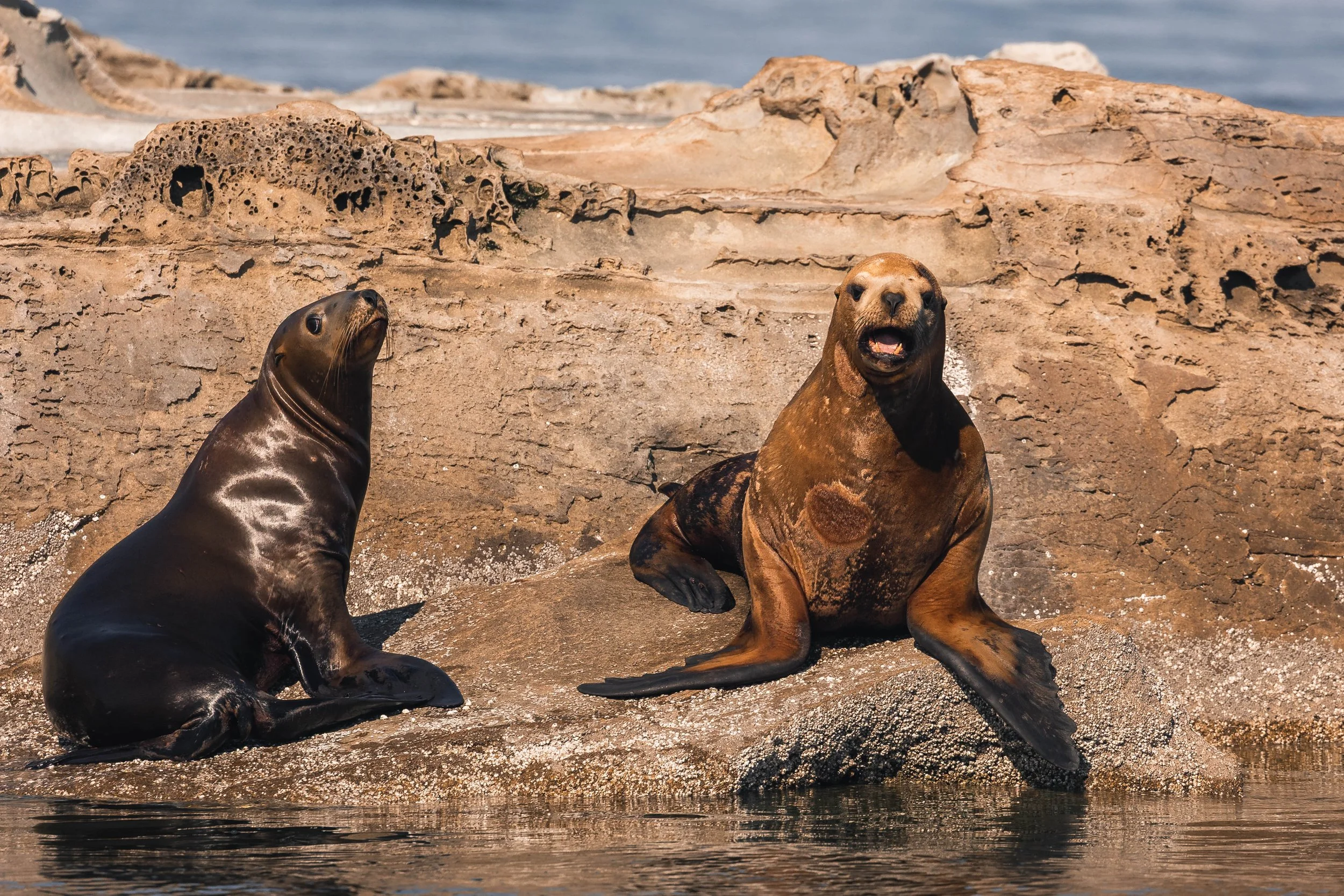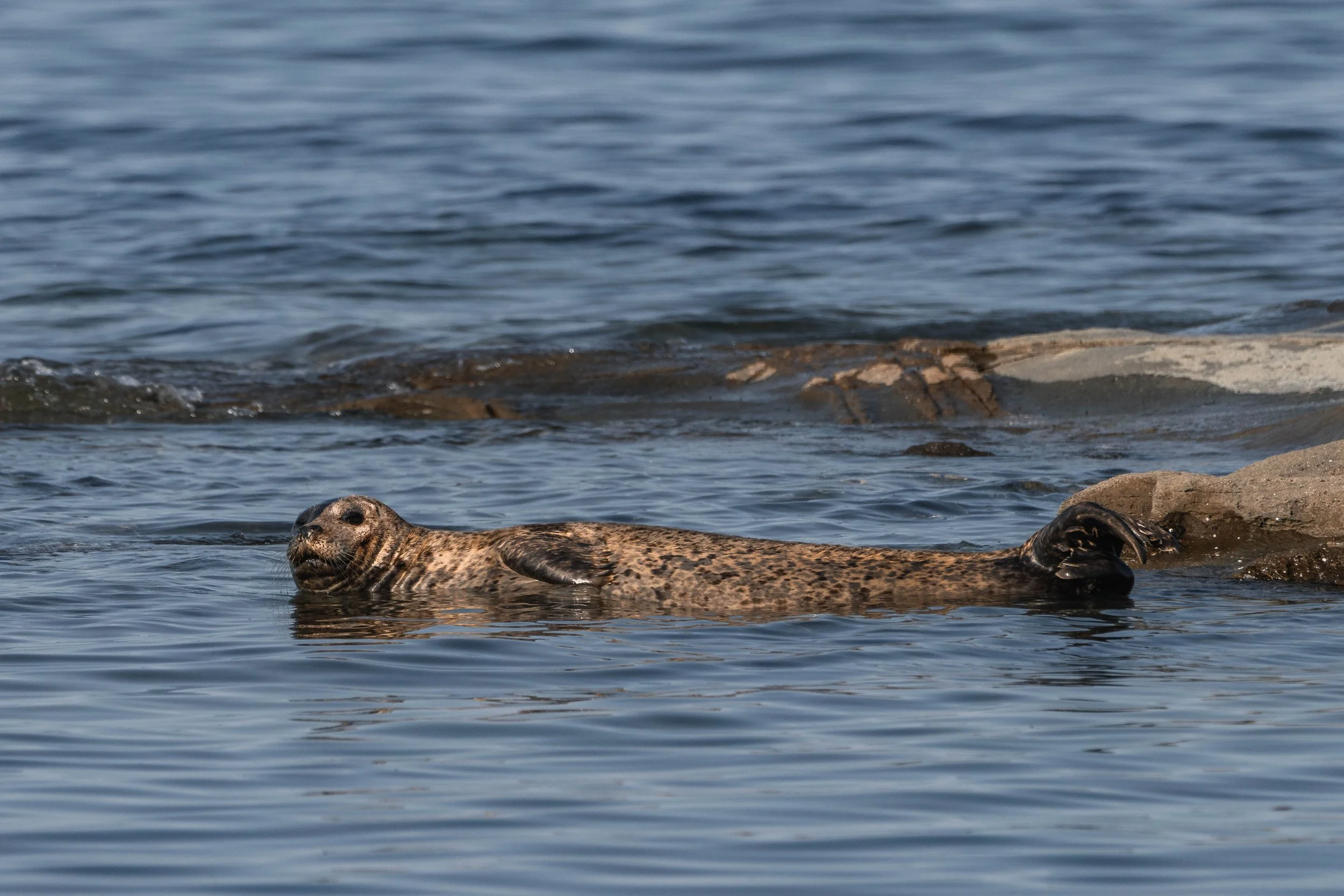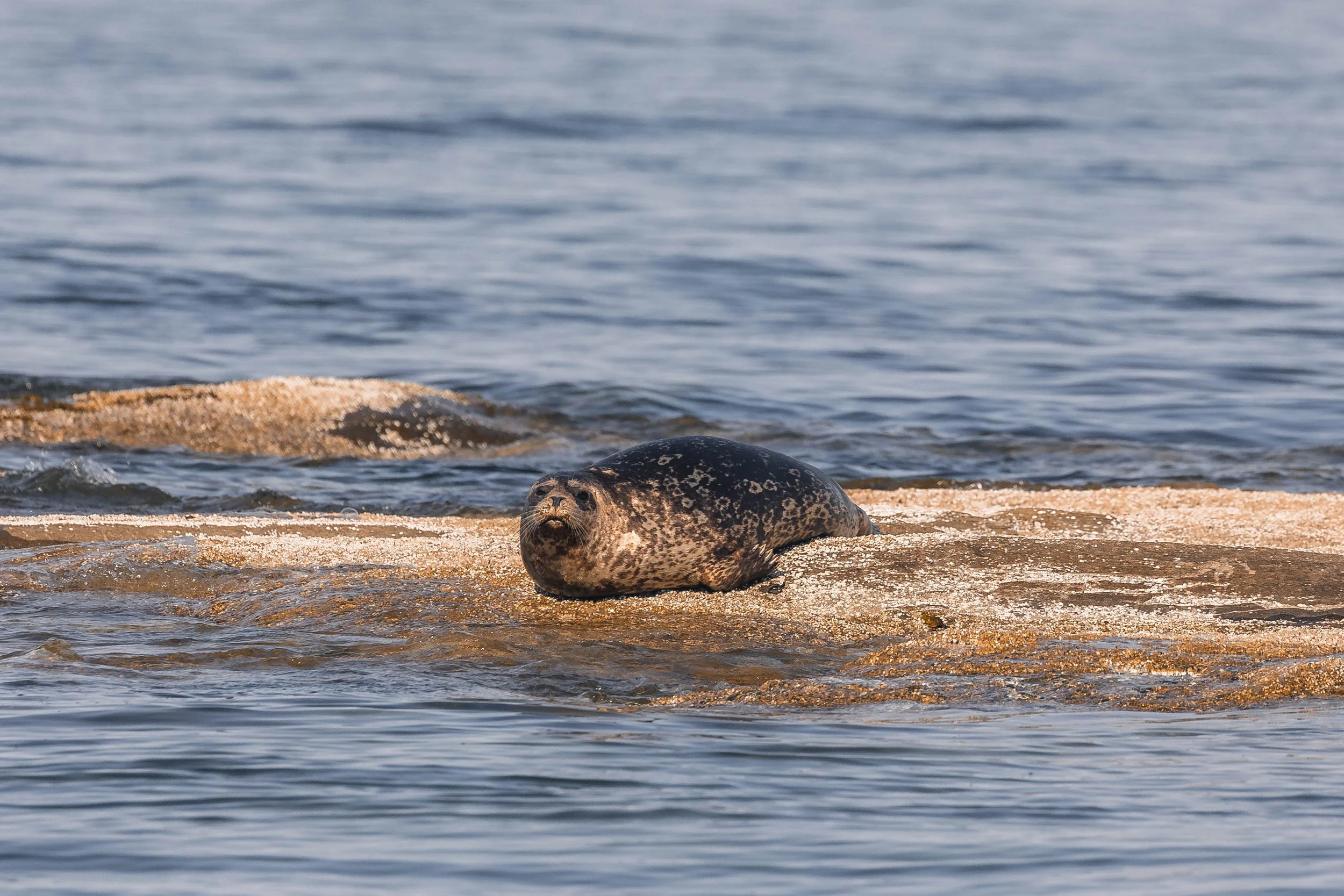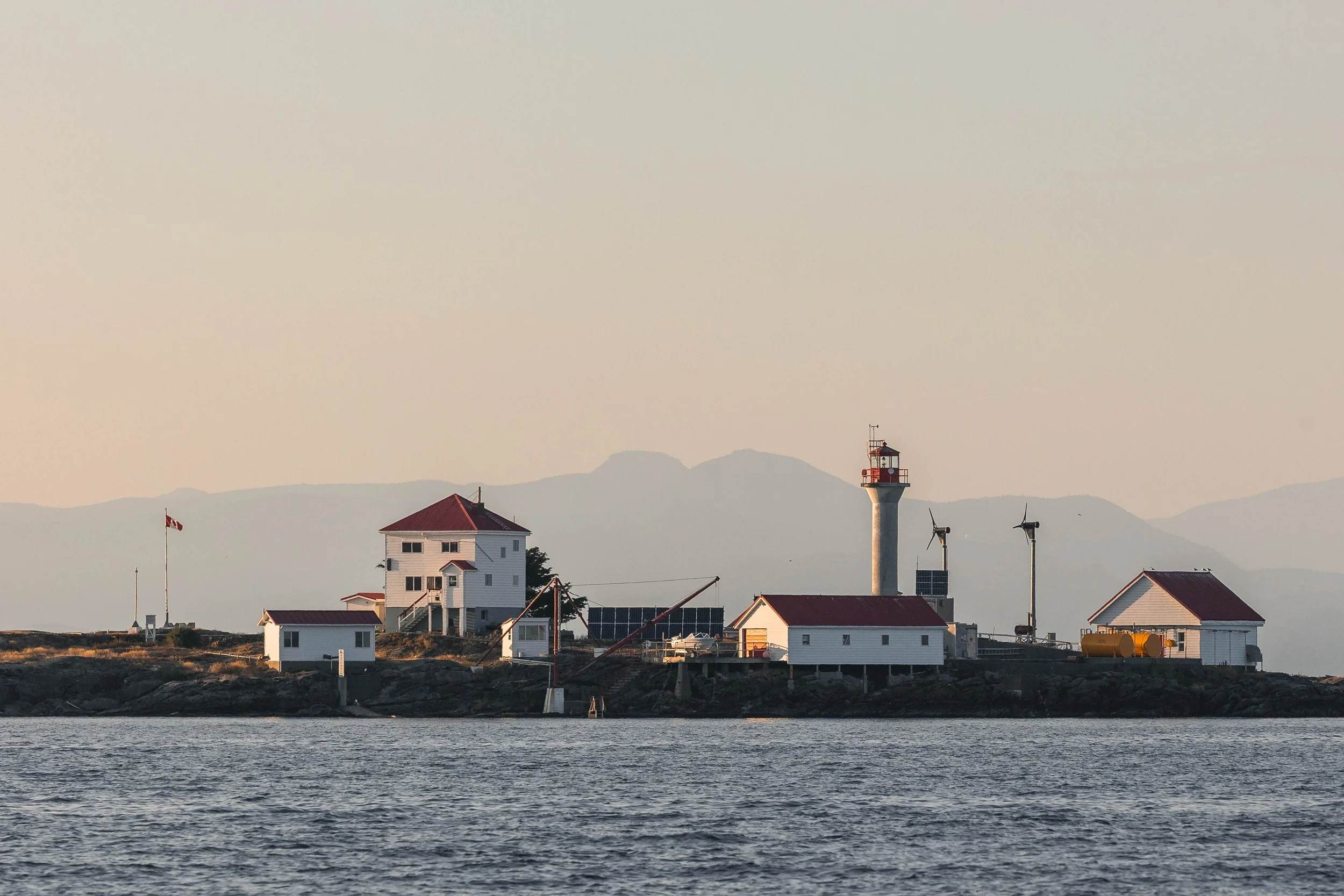August 9, 2025, 3:30 PM - Humpbacks, Humpbacks, and More Humpbacks!
This afternoon, we had both Kula and Keta off the dock, and the Strait of Georgia greeted us with glassy calm seas, perfect conditions for spotting wildlife. It wasn’t long before we realized we had stumbled into something extraordinary: humpbacks were everywhere. Blows rose across the horizon, tails lifted in unison, and our onboard naturalists immediately had their work cut out for them. Cameras were snapping, not just for guest memories, but for the vital behind-the-scenes work that goes into humpback whale research.
One of the most important tools we have as whale watchers and researchers is the photo-identification catalogue. Each humpback has a unique pattern on the underside of its tail, almost like a fingerprint. By capturing a clear photo, we can match what we see out on the water to a master catalogue that helps us keep track of who’s who in the population.
To keep things organized, humpbacks in our region are divided into three categories: X, Y, and Z whales.
X whale tail flukes are 80% or more black.
Y whale tail flukes are a blend of the black and white colouration.
Z whale tail flukes are 80% or more white.
This system makes identification far more efficient, as we always have a starting point when matching a new sighting. Today we saw and identified: Fader (BCY0195), Barge Boy (KEX0078), ZigZag (BCX1193), BCX1193 calf 2025, Valiant (BCX1773), BCX1773 calf 2025, Kappa (BCX0158), BCX0158 calf 2025, Helen (KEX0077), Moresby (KEY0055), Squirrel/Smoke (BCX2183), Wisp (BCY1464), Bullet (BCX1658), Hammer (BCY1222), Flier (BCX1782), Checkmate (BCY1104) and BCX0158 calf 2022.
It’s always a special treat to spot a mother and her new baby! When a humpback calf first arrives, it begins its record with a temporary calf code, made up of its mother’s scientific number. We don’t give calves nicknames until they’re at least two years old. The reason is sobering: the mortality rate among young humpbacks is very high, especially within their first year of life.
Calves face enormous challenges on their long migration. Born in the warm waters of Hawaii or Mexico, they must travel thousands of kilometres north to feeding grounds like ours. Along the way, they encounter predators such as orca, exhaustion from the journey itself, entanglement and the added danger of ship strikes in busy shipping lanes. Their mothers must also work tirelessly, fasting the entire trip and producing enough milk to sustain their young. Sadly, not every calf makes it.
But there is hope. Conservation efforts are constantly underway to make the migration less perilous. For example, shipping lanes have been adjusted in some regions to reduce the risk of collisions, and new regulations on noise pollution aim to give whales a quieter, safer passage. Each improvement, no matter how small, increases the chance that more calves will survive to adulthood.
It wasn’t just humpbacks that made an appearance today. Along the rocky shoreline, we spotted harbour seals hauled out basking in the sun, and nearby, a cluster of massive Steller Sea Lions made their presence known with their unmistakable roars. These marine mammals also face human-caused challenges. Entanglement in fishing gear and historical overhunting were once major threats. While protections and better fishing practices have significantly reduced these dangers, entanglement still occurs, and it reminds us how vital ongoing stewardship is. Improved fishing gear design and quick-response disentanglement teams have been making a real difference, but there’s always more work to do!
With our memory cards full of whale tails and our guests buzzing with excitement, we eventually turned back toward Nanaimo. The seas remained calm all the way home, giving us a chance to reflect on the incredible diversity of life we had seen in just one afternoon. From calves fighting the odds to seals and sea lions benefiting from years of conservation progress, every sighting reminds us of the delicate balance of the Salish Sea and the potential of human effort to protect it.
Another day, another reminder of just how lucky we are to share these waters!
Photos by Marine Naturalists Jordan Robinson and Val Watson.
Helen fluking. Photo by Jordan Robinson.
Can you see inside the mouth as Helen feeds? Photo by Jordan Robinson.
A chin! Photo by Jordan Robinson.
Those bumps are called tubercles. Photo by Jordan Robinson.
Valiant with her calf at her side. Photo by Jordan Robinson.
A small roll! Photo by Jordan Robinson.
A side stroke from Kappa’s calf. Photo by Jordan Robinson.
Kappa’s fluke with her calf’s pec in the air. Photo by Jordan Robinson.
Kappa’s barnacle covered calf. Photo by Jordan Robinson.
Kappa’s fluke. Photo by Jordan Robinson.
Fader fluking. Photo by Val Watson.
A beautiful fluke waterfall. Photo by Val Watson.
Surfacing for a breath. Photo by Val Watson.
Zig Zag treating us to another waterfall. Photo by Val Watson.
The underside of Zig Zag’s tail. Photo by Val Watson.
Kappa’s calf. Photo by Val Watson.
Kappa’s calfs dorsal fin. Photo by Val Watson.
Kappa’s calf fluking. Photo by Val Watson.
Wisp diving. Photo by Val Watson.
Wisp with the mountains. Photo by Val Watson.
A tail flick from Wisp. Photo by Val Watson.
Flier fluking. Photo by Jordan Robinson.
Moresby fluking. Photo by Jordan Robinson.
Bullet fluking. Photo by Jordan Robinson.
Hammer fluking. Photo by Jordan Robinson.
Checkmate moving some water. Photo by Jordan Robinson.
Checkmate’s tail. Photo by Jordan Robinson.
BCX0158 calf 2022. This is another of Kappa’s calfs, born in 2022.
Another waterfall! Photo by Jordan Robinson.
A trio of humpbacks. Photo by Val Watson.
Surfacing at sunset. Photo by Val Watson.
Can you spot Entrance Island on the horizon? Photo by Val Watson.
A Steller Sea Lion in the waves. Photo by Val Watson.
This Steller looks upset. Photo by Jordan Robinson.
A harbour seal lounging. Photo by Val Watson.
Sleeping on their back. Photo by Jordan Robinson.
This seal is watching us back! Photo by Jordan Robinson.
Entrance Island. Photo by Jordan Robinson.


